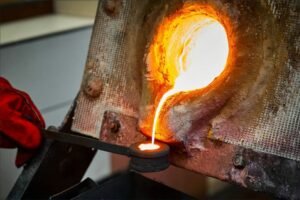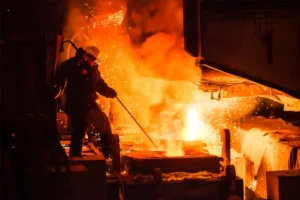Annealing:
Heating the metal above its critical temperature and holding it there for a period of time to allow the crystal structure to rearrange itself internally.
The metal is cooled slowly, usually in a furnace, or allowed to cool naturally to room temperature at the end of the heating.
The result is that the grains are rearranged, internal stresses are reduced, and toughness and ductility are improved, but hardness may be reduced.
Normalizing:
Similar to normalizing, but after being heated to a high temperature, air is cooled to obtain a more uniform grain structure.
This process results in finer, more uniform grains and improves the strength and toughness of the metal.
Quenching:
Heating a metal above a critical temperature and then rapidly cooling it to a medium (usually water, oil, or air).
The rapid cooling results in rapid solidification of the crystal structure, resulting in a hard but brittle structure. Hardness increases but toughness decreases.
Tempering:
After quenching, the metal is reheated to a lower temperature (usually lower than the quenching temperature).
It is continued at this temperature for a period of time to reduce the brittleness caused by quenching while maintaining some hardness and increasing toughness.
Tempering can be done as many times as necessary to condition the metal.
The Difference Between Normalizing, Annealing, Quenching and Tempering
Heating Process:
Normalizing and Annealing: both methods involve heating the metal to a certain temperature followed by varying degrees of cooling. Normalizing usually involves slow cooling to room temperature after heating, while annealing involves air cooling after heating to obtain a more uniform grain structure.
Quenching: This is the process of heating a metal to a high temperature and then rapidly cooling it in a medium that causes the metal to solidify rapidly to form a hard but brittle structure.
Tempering: After quenching, the metal is reheated and cooled at a lower temperature for a period of time to reduce the brittleness caused by quenching and to increase the toughness of the metal.
Rate and effect of cooling:
Normalizing and annealing are relatively slow cooling processes to improve the crystalline structure of the metal and reduce internal stresses to improve toughness.
Quenching, on the other hand, is a rapid cooling process that results in an increase in hardness but a decrease in toughness of the metal.
Tempering, on the other hand, balances hardness and toughness by reheating and controlled cooling after quenching.
Effects and Uses:
Normalizing and annealing are designed to increase the toughness and ductility of a metal to make it easier to machine and deform, and are often used to relieve internal stresses, improve the organization of the metal, and reduce brittleness.
Hardening is used to increase the hardness and surface strength of metals at the expense of some toughness.
Tempering is used to balance the hardness and toughness of the metal after quenching to obtain material properties more suitable for practical applications.







